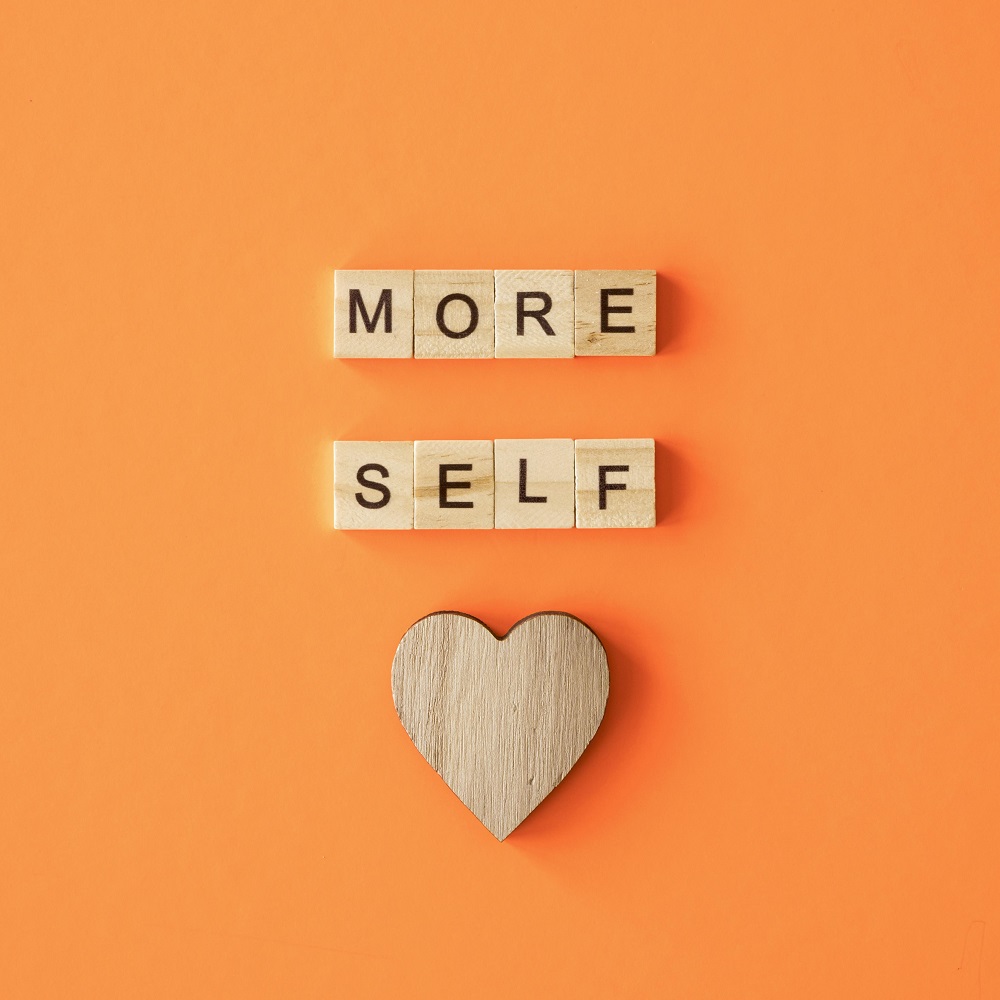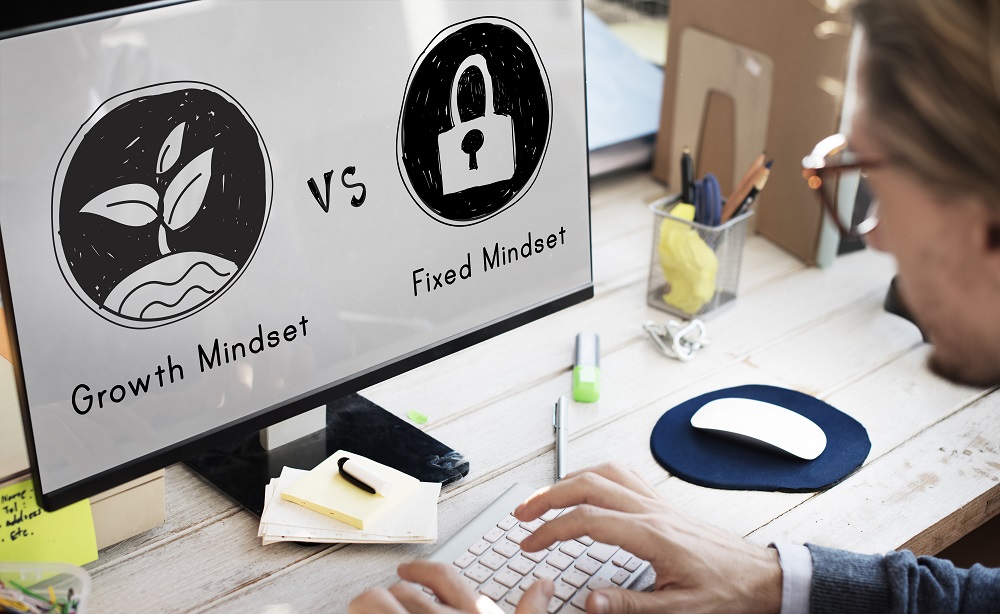

Before talking about the techniques of self-realization, I will define what is the Self and the Spirit for a better understanding.
The more we get to know ourselves, the more we can expect to touch the truth… and live happily ever after.
The self and the mind
Sself” and “mind” are often used interchangeably, but they actually refer to different concepts.
Self refers to our sense of identity or understanding of who we are. This includes our beliefs, values and personality traits. It is a subjective and unique experience for everyone.
On the other hand, mind refers to the cognitive and emotional processes that take place in our brain. It includes our conscious and unconscious thoughts, perceptions, feelings and memories.
In other words, the self is a product of the mind, but it is not the same as the mind itself.
It is important to note that there are many different theories and perspectives on self and mind, and their relationship to each other. Some philosophical and psychological traditions view them as inseparable, while others view them as separate entities.
I will try to explain the Hindu concepts to you because they are the ones that speak to me the most and that correspond to my philosophy of life.
In Hinduism, the concepts of self and mind are intertwined, and both are considered integral to our human experience.


The Self
The self is called “Atman”. Atman is the individual soul or self that is believed to be eternal and immutable. It is the essence of the individual, and it is believed to be related to the ultimate or divine reality, which is called Brahman.
The goal of spiritual practice in Hinduism is to achieve unity between the individual self (Atman) and ultimate reality (Brahman).
Do you Mind…
The mind, on the other hand, is called Manas. It is considered the instrument that the self uses to perceive the world and interact with it. Our mind is also responsible for processing information, generating our thoughts, our emotions. and also the distortion of reality. Let’s talk about that later.
Our mind is constantly moving and changing, and it can be a source of both suffering and liberation. When the mind is clouded with ignorance, desires and attachments, it can lead to suffering and bondage. But when the mind is purified through spiritual practice and detachment, it can lead to liberation and union with the divine.


Thus, in Hinduism, the self (Atman) is the eternal essence of the individual, and the mind (Manas) is the instrument through which the self interacts with the world. Both are important aspects of our human experience and are closely related to spiritual practice and liberation.
The mind and its layers
So our mind is considered the main tool by which an individual perceives and interacts with the world. It is responsible for processing information from the senses such as sight, hearing, taste, touch and smell called Indriyas and generating thoughts, emotions and desires related to these.
But the mind actively participates in shaping our experiences. It constantly interprets and makes sense of sensory input, and it can be influenced by factors such as our past experiences, conditioning, and cultural beliefs.
In addition to the mind, Hinduism also recognizes 4 functions to contribute to individual perception of the world. These include:
– Manas which processes sensory information,
– Chitta which stores impressions,
– Ahamkara which creates the ego,
– And Buddhi who makes the decisions. It is judgment and discrimination.
To progress spiritually, we must understand each of these functions independently and coordinate them together.
What is Manas?


Manas is considered the lower mind, responsible for processing sensory information and receiving external stimuli for the outside world. He tends to question and doubt, which can be a problem if he becomes excessive. Additionally, Manas acts as the direct supervisor of the senses in the inner workings of the mind.
Chitta?
Chitta is the component of the mind that serves as a storage bank for memories and impressions.
Impressions or samskara (mental impressions, memories or psychological imprints) are conscious actions whether cognitive, affective or conative which take a potential and hidden form just below the threshold of consciousness. This is called a Samskara.
They are imprinted on the subconscious mind or Chitta. The subconscious mind is located in the cerebellum. So, the storage of Samskaras in the subconscious mind contains our memories of past experiences, preserved in fine detail without loss. When these fine vritti or thoughts resurface and come back to the conscious mind as a wave, it is called memory or Smriti.
Each memory is connected to a Samskara; thus, memory cannot exist without the aid of Samskara.
Although Chitta can be beneficial, its function can become problematic if not properly coordinated with the other components of the mind. Chitta is responsible for storing innumerable latent impressions.
Ahamkara?
Our ego or ahamkara not only provides a sense of identity to our functioning, but also causes our feelings of separation, pain and alienation. It is like a powerful wave that proclaims “I am” and creates a sense of individuality and ego.
Buddhi?
Buddhi (intellect) is the higher aspect of the spirit, giving access to inner wisdom and being decision maker in our factory of life. The term Buddhi is derived from the root word “budh”, which means awakened.
Buddhi judges, makes decisions and discriminates between options. However, its ability to guide Manas depends on how clear it works and whether Manas accepts its guidance or not. In life it is crucial for Buddhi to make decisions otherwise Manas will rely on patterns of habits stored in Chitta which are colored by ego (Ahamkara). Due to the impressions and coloring of Chitta, Buddhi may darken. Therefore, an important task of spiritual practices is to clarify the clouded Buddhi, which enables clear choices and leads to the fruits of spiritual practices.
Understanding the different layers of the mind can help develop awareness and control over one’s thoughts, emotions, and behavior, and cultivate a deeper understanding of the nature of the Self.
Clearing our perceived reality requires cultivating a state of awareness and detachment, so that the mind (Manas) can perceive reality without being clouded by desires, attachments and conditioning.
Together, these tools or faculties shape an individual’s perception of the world and, ultimately, their experience of life.
Through spiritual practice, such as meditation and self-enquiry, we can gain greater awareness of these tools and learn to cultivate our more mindful and enlightened perception of reality.
How to Coordinate and Calm the Mind?
One of the key practices to clear our mind and perceive reality more clearly is meditation. Through meditation, we can learn to quiet our minds and cultivate a state of inner calm and clarity. It helps to reduce mental chatter, emotional turbulence and to have a clearer perception of reality.


Another important practice in Hinduism is self-enquiry. It involves questioning our beliefs, values and assumptions in order to gain a deeper understanding of the true nature of reality. By examining our own thoughts and perceptions, we can begin to identify and detach ourselves from our conditioned thought patterns as these can distort our perception of reality.
Also, practicing detachment and non-attachment helps to clear our mind and perceive reality more clearly. By letting go of our desires and attachments, we learn to observe the world without being influenced by our own preferences or prejudices.
When I talk about surrender, I am not talking about disdaining our desires and attachments but understanding their process, accepting them in order to let them go.
Finally, the study of the scriptures and the teachings are also of great help in clearing our minds and perceiving reality more accurately. These teachings provide insight into the nature of the self, the universe, and ultimate reality. They help us gain a deeper understanding of the true nature of our existence.
In summary, clearing perceived reality requires cultivating awareness, detachment, and introspection through practices such as meditation, self-examination, detachment, and study of scriptures and teachings.
What books or teachings should I recommend?
In Hinduism, there are many scriptures and books that provide guidance, understandings of the nature of reality and the spiritual path.
Some of the most important texts include:
The Vedas.
They are the oldest and most sacred texts of Hinduism, and divinely revealed grace to meditations of the Rishis. Vedas contain hymns, prayers and rituals that explore the nature of the universe and the divine. They are 4. The Rig Veda, the Sama Veda, the Yajur Veda, and the Atharva Veda.
Upanishads.
It is a collection of philosophical texts that explore the nature of the self, the universe, and ultimate reality. They provide guidance on spiritual practice and the path to liberation.
The principal Upanishads are Ishopnishad, Kenopnishad, Kathopnishad, Prashnopnishad, Mundkopnishad, Maandukyapnishad, Aitreypnishad, Taitriyapnishad, Chhandogyapanishad, Brihadaryankyapnishad, Shwetashwetarpnishad.
Bhagavad Gita.
It is an epic poem that explores the nature of dharma (righteous actions) and the spiritual path. It provides advice and comprehension on how to live a virtuous life and achieve spiritual liberation.
The Yoga Sutras of Patanjali
A text that explores the nature of yoga (union with the divine) and provides guidance on spiritual practice. It includes teachings on meditation, ethics, and attaining enlightenment.
Ramayana and Mahabharata.
Two amazing epic poems that explore the nature of dharma, righteousness and the spiritual path. They describe the nature of human relationships, the life challenges and goal ultimate liberation.
The Puranas.
They are a collection of mythological and historical texts that explore the nature of the universe and the divine. They provide guidance on spiritual practice and the path to liberation. The six most significant of these are: Markandeya Purana, Shiva Purana, Linga Purana, Brahma Vaivarta Purana, Agni Purana and Padma Purana.
Treaties
The Ashtavakra Gita is a classic text of Advaita Vedanta, a school of Hindu philosophy that emphasizes non-dualism and the unity of the individual self (Atman) and ultimate reality (Brahman). It takes the form of a dialogue between the sage Ashtavakra and King Janaka, and explores themes such as the nature of the self, the illusory nature of the world, and the path to spiritual liberation.
If you are seeking liberation, my son, avoid the objects of the senses like poison and cultivate tolerance, sincerity, compassion, contentment, and truthfulness as the antidote. 1.2
You are the one witness of everything and are always completely free. The cause of your bondage is that you see the witness as something other than this. 1.7
Why is it necessary to study the Self and life?
The study of these scriptures and these books give insight into the nature of reality and the spiritual path. However, it is important to note that their teachings must be approached with an open and insightful mind, and that ultimately spiritual realization comes from direct experience and inner realization rather than mere intellectual knowledge.
Let’s just go back to Ashtavakra Gita.
The Ashtavakra Gita is considered a profound and insightful text on the nature of reality and the spiritual path. It emphasizes the importance of transcending the limitations of our mind and ego in order to realize the true nature of the self and the universe. It provides guidance on how to cultivate detachment, equanimity, and self-knowledge in order to achieve spiritual realization.
“The mind that seeks liberation is like a bird yearning to escape from its cage. When it realizes that it is not the cage, but the pure sky, it is instantly liberated.” (Chapter 8, Verse 1)
Many spiritual seekers have found the Ashtavakra Gita to be a valuable resource for better understanding the nature of reality and the spiritual path. Its teachings are often seen as a supplement to other classical Hindu texts such as the Bhagavad Gita and the Upanishads.
“Attachment and aversion arise from the illusory perception of the self as separate from the world. When this illusion is dispelled, one attains supreme peace.” (Chapter 18, Verse 64)
How to discover the difference between your self and your mind?
It is essential to be aware of your mind. You have to observe your mind, pay attention to what it produces and see the difference between your Self and your mind.
Most people aren’t used to sitting and not thinking, so they start making things up when they have nothing to do. But if you observe your mind without identifying with it, just be aware of every thought, feeling, memory, projection, imagination and image that arises, you create a separation between mind and Self. You become the subject who witnesses the object, which is the mental activity.
As you continue to observe the mind, your attention returns to awareness and you naturally become aware of yourself. This is the exercise that I encourage you to practice. Just be still, observe your mind and see the movements of the mind that don’t belong to the present moment or to anything around you. Everything around us is innocent; nothing attacks you. The mind creates relationships, intentions, and to-do lists that distract you from your natural peace.


Your being should not be ruled by your mind, but in the state of functional consciousness you should be in background consciousness. You don’t have to plan or struggle; life already supports your activity. However, when you live in mind-generated activity, you engage in procrastination, fantasizing, wishful thinking, memory, subjective interpretations, and other ego-driven behaviors that bear no fruit except disharmony and suffering.
So…
So, my dear, the more you practice observing your mind, the more aware you will be of the Self, which is not only aware of the mind. You can work with the mind, but you are not the mind. You are the witness of the spirit. That’s the difference. When you are formless consciousness, you can deal with forms and you can work with them because the background is formless. It is a simple exercise, but it requires attention, discipline and patience. So take a few minutes each day to sit down, observe your mind, and discover the difference between your Self and your mind.
“Ignorance is the root cause of all suffering, and knowledge of the Self is the only way to liberation. Through constant reflection and contemplation, one can dispel ignorance and attain Self-realization.” (Verse 15)
How to make it yourself
Here are some specific steps that can help realize the Self:
By cultivating your consciousness
1. Shravana. Look for a qualified teacher and listen to the teachings of the scriptures. Find a teacher who has a deep understanding of the scriptures and who can guide you in your spiritual practice.
2. Study the scriptures. Read and study the teachings of the scriptures such as the Upanishads, the Bhagavad Gita and the Tattvabodha to gain a theoretical understanding of the nature of the Self.
3. Manana. Think about the teachings: contemplate the teachings and reflect on their meaning to deepen your knowledge and understanding.
4. Nididhyasana. Practice self-enquiry. Question the nature of your own existence and identity. Ask yourself, “Who am I? and “What is the nature of the Self?”. Meditate regularly to calm your mind and develop mindfulness and concentration. It can help to gain a direct experience of the Self.
6. Cultivate virtues. Develop virtues such as compassion, humility and detachment, which can help purify the mind and prepare it for direct experience of the Self.
7. Surrender to the Self. Ultimately, Self-realization is not something that can be achieved through effort alone. It requires letting go of the ego and allowing the true nature of the Self to reveal itself.
By physical means
Realizing the true nature of the Self is a spiritual process that involves transformation of the mind and inner being, and it cannot be achieved through physical means alone. However, the physical practices support the spiritual process and help to prepare the mind and body for Self-realization.
Some of these practices include:
1. Hatha yoga.


The practice of yoga poses, or asanas, helps prepare your body for meditation and spiritual practice by increasing flexibility, strength, and balance. It purifies body and mind, balances the energies of the body and prepares the mind.
2. Pranayama.
The practice of breath control, or pranayama, calms your mind, purifies and develops attention and concentration, essential to spiritual practice.
3. Seva.
The practice of selfless service, or seva. It cultivates virtues such as compassion and humility, which are important for spiritual growth.
4. Fasting.
Purifies your body and mind, and can also increase focus and intensity of spiritual practice.
5. Satsang.
Which are spiritual gatherings and a supportive community of like-minded individuals. They can provide opportunities for learning, reflection and spiritual growth.
6. Ayurveda.
It is the Indian system of medicine necessary to create and maintain your balanced and healthy body and mind. These last are essentials for spiritual practice.
7. Japa.
The practice of repeating a mantra or a sacred name which aide to focus the mind and develop devotion to the Divine.
8. Pilgrimage.
Visiting sacred places or undertaking a pilgrimage can help create an environment conducive to spiritual practice and also provide opportunities for learning and cultivating your thinking.
9. Nature walks.
Spending time in nature, such as taking a walk in the forest or by the ocean, calms the mind, helps to connect with the Divine and to better understand the nature of the Self.
However, it is important to note that these physical practices alone cannot lead to Self-realization. They must be accompanied by the previously mentioned spiritual practices, such as introspection, reflection and meditation.
The ultimate goal is to realize the true nature of the Self through spiritual practice and inner transformation.
We can also cultivate gratitude and contentment because what you already have in your life can help reduce attachments and desires, which are barriers to spiritual growth.
Cultivate compassion and benevolence towards oneself and others, humility, patience and forgiveness.
Simplicity is the best way to erase attachment and desire and realize that we don’t need so much in life to be happy.
Conclusion
Live a simple, balanced life focusing on your inner growth and spiritual development rather than material wealth and outward success to create an environment conducive to your spiritual practice.
We need these virtues to live better in this plan.
All of that is not to become a monk…But to be as much as true as you are.
Remember that the spiritual journey is deeply personal and individual, and what works for one person may not work for another. It is important to be patient, persistent and compassionate with yourself, and to trust the inner guidance that comes from practice. Our growth is conditionned by consistency and will all our life. Nothing come with magic wand!
More we will be aware and self-aware, the more this world will reflect our beauty.
“Realize that the self is not the doer, but only the witness of all actions. Abide in this knowledge, and you will be free from all karma.” (Chapter 18, Verse 74)


References
Mindfulness functions to reduce suffering and create a sustainable healthy mind
Mesuring the effects of self-awareness
The Importance of Awareness, Acceptance, and Alignment With the Self
